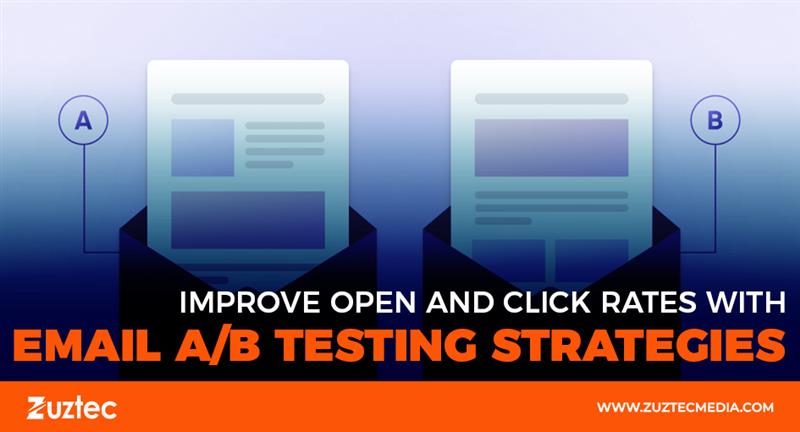
Improve Open And Click Rates With Email A/B Testing Strategies
Email marketing remains one of the most cost-effective ways to connect with audiences, but even small tweaks can make a big difference in how people respond. One of the most valuable tools for improving results is A/B testing, which allows marketers to compare two versions of an email to see which performs better. From subject lines to calls to action, every part of an email can be tested and optimized for maximum engagement.
Using email A/B testing strategies allows you to continuously refine your approach. Rather than guessing what works, you’re using real data to drive decisions. Whether you’re trying to improve open rates, reduce unsubscribe rates, or boost purchases from your emails, A/B testing provides a systematic way to experiment and improve.
The process of A/B testing is fairly straightforward. You create two versions of a single element, like the subject line, and send each version to a random sample of your audience. Over time, these insights can guide your strategy and help you build more effective email campaigns.
This article will explore how to use email testing strategies effectively. We’ll look at what elements to test, how to structure your tests for meaningful results, tools that can help, and tips for interpreting your data. With the right testing framework, you can make smarter choices and consistently enhance your email performance.
Understanding Email A/B Testing Strategies
Email testing strategies focus on comparing two versions of an email to identify which version performs better based on specific metrics. You might test subject lines, headlines, images, layout, content length, or call-to-action buttons. The key is to change only one variable at a time so you can clearly see which factor influences performance.
For example, if you want to test the subject line, keep the rest of the email exactly the same. Half of your audience gets Subject Line A, while the other half gets Subject Line B. You then compare open rates to determine which subject line was more effective. If you’re testing body content or images, measure clicks or conversions to see which version drives better results.
Running regular A/B tests helps you uncover patterns and preferences in your audience. Perhaps shorter subject lines get better open rates, or a certain image style leads to more clicks. These discoveries allow you to continuously adjust your messaging based on real user behavior instead of assumptions.
Key Elements To Test In Your Campaigns
There are several parts of an email you can test. Start with subject lines, as they have a major impact on open rates. Test different wording, lengths, questions versus statements, or the use of personalization. Next, experiment with the email’s layout and design. Does a single column perform better than a multi-column format?
You can also test the timing of your emails. Sending an email on Tuesday morning might perform differently than one sent on Friday afternoon. Some tools let you test delivery times automatically to find the optimal schedule.
Other testable elements include headlines, body copy tone, testimonials, product descriptions, images, and call-to-action placement. For example, placing the CTA button above the fold might generate more clicks than placing it at the bottom.
In the midbody of your email campaign, be sure to include engaging and relevant content that builds interest and guides the reader toward a clear next step. This is where well-executed email A/B testing strategies can help you determine which content types generate the highest user engagement.
Tools That Make A/B Testing Easier
Most modern email marketing platforms come with built-in A/B testing tools. Services like Mailchimp, HubSpot, ActiveCampaign, and Campaign Monitor allow you to create and launch tests directly within your campaigns. These platforms also help you define your testing groups, track performance, and declare a winner automatically based on your chosen metric.
When selecting a tool, look for one that offers flexibility in what you can test. Some platforms allow testing only subject lines, while others enable testing of entire email templates. Choose a platform that fits your goals and provides clear reporting so you can understand the results and apply the insights.
If you’re running large campaigns, consider tools that support multivariate testing. This lets you test several changes at once—such as a combination of subject line and CTA—though it requires a bigger audience to get meaningful results. For smaller lists, stick to traditional A/B testing with one variable at a time to avoid inconclusive data.
Conclusion: Data-Driven Success Through Smart Testing
Email A/B testing strategies are essential for marketers who want to improve results without guessing what works. By testing one element at a time, analyzing the results, and applying what you learn, you can make smarter decisions and deliver more impactful emails. In the long run, this kind of data-driven approach will improve your open rates, click-throughs, and conversion rates. Keep refining, keep learning, and let your audience’s behavior guide your strategy.

